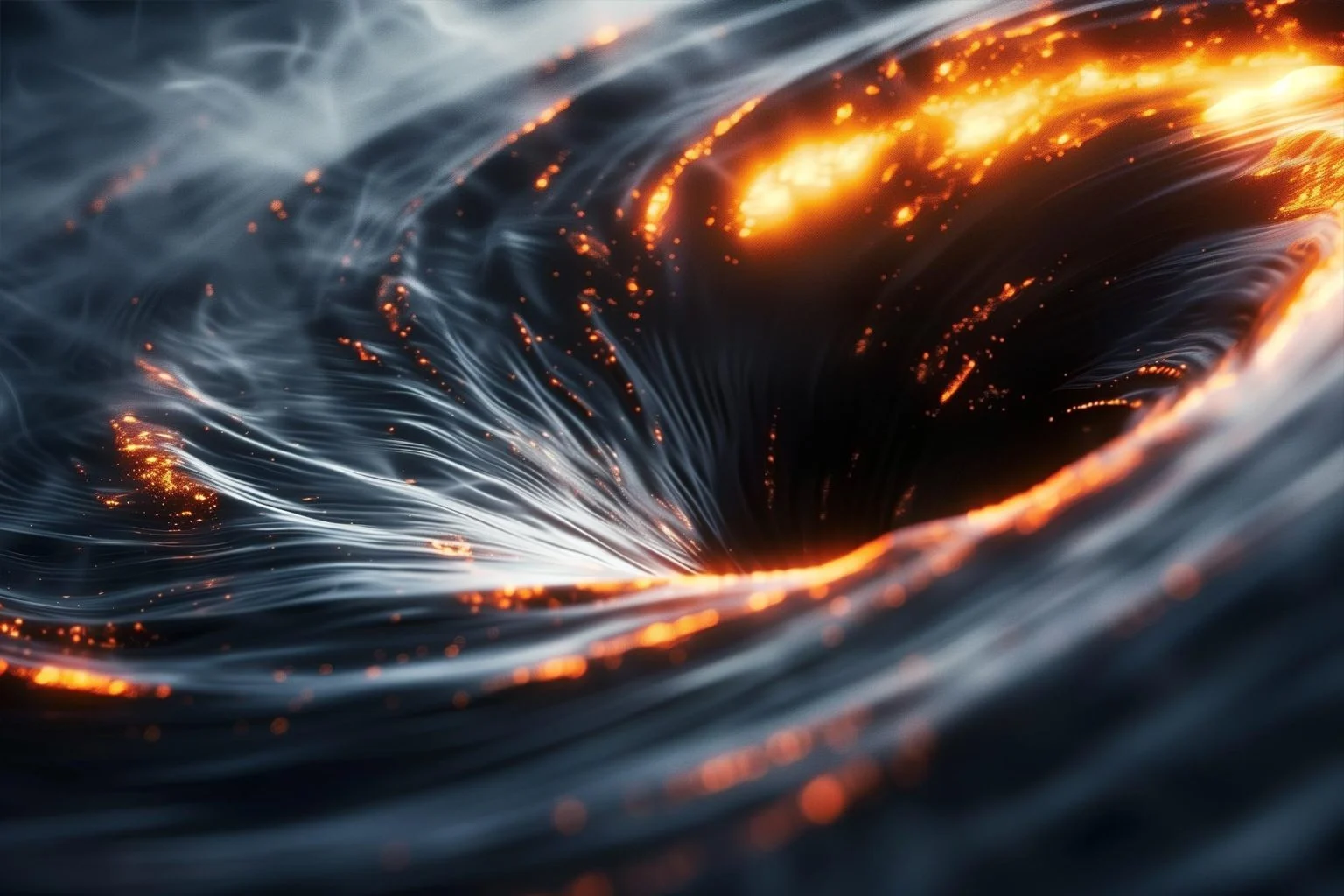"New research highlights that black holes should be viewed as dynamic systems, shedding light on their quantum thermodynamic properties. This study also extends these properties to Extremely Compact Objects (ECOs), potentially contributing to resolving the black hole information paradox and enriching our understanding of quantum gravity. Credit: SciTechDaily.com"
Black holes are like whirls. They pull energy fields inside them. And those energy fields pull all particles and wave movement with them like water pulls objects to the whirl.
Black holes and their form are hidden in the extreme gravity field. The idea is that when a black hole forms in a supernova explosion. The explosion presses all quarks in the structure together. The singularity is an extreme version of the quark material. In that material. All atomic particles from the star collapse into one extremely slight particle. That ultimate dense particle is so slight that energy cannot fill it.
The outcoming energy travels over the singularity to its poles. And that thing causes a situation. That the standing wave around the singularity keeps outcoming quantum fields away from that structure. The singularity is so slight that energy cannot grasp it.
The standing wave around the singularity locks it in form. The normal black hole must have a certain mass that the size or radius of the field that comes into the black hole, is large enough. The outcoming quantum field must have so much force that it can lock the singularity in its form.
If the pressure of the outcoming quantum field is too low. The singularity explodes, or it vaporizes very fast. In this text, quantum field is the common name for all four fundamental interactions, gravity, electromagnetism, and weak and strong nuclear forces.
Maybe, the shockwave that pulls all energy fields out from around the singularity pulls that structure to an oval. Then collapse field from the poles of the detonated star presses that structure into the 2D form. In some models is possible that if the structure that forms in the black hole is large enough the electromagnetic vacuum rips the hole in the singularity.
Then the impacting electromagnetic or quantum field hits that hole. And the material turns into a donut-shaped form. The energy or material cannot fill that hole, because the energy pillar has so high energy level that the side coming quantum fields cannot fill that point. That structure is possible but proving it is almost impossible.
The gravity and all other quantum fields in the black holes are probably looking helical. The image is taken from a story that tells about helical magnetic fields, but all wave movements act in a similar way. The high-speed spin of the black hole can turn its gravity field to look like this. There are some structures like superstrings that can take gravity and all other quantum fields with it.
An illustration showing various aspects of the early universe, including radiation generated by the Big Bang and ancient black holes (Image credit: ESA)
Black holes are been a mystery. In some theories, some black holes are from the time before the Big Bang. The form of black holes is hard to calculate because black holes are the thing that can connect dark matter and visible matter. Theories about the primordial black holes consist the very low mass black holes, that can be lighter than Earth.
In those cases, the ultimate high energy load in the black hole's transition or material disk can pump energy to that structure so that the black hole will not vaporize. It's possible. That the black hole can reach stability. That it delivers as much energy as it gets.
The hypothetical quasi-star can be the answer to many problems. Those giant stars might exist in the young universe. But those things can remain in some largest and brightest stars. But that requires the existence of quasi-stars.
When researchers talk about things like quasi-stars they mean situations where the plasma shell of the star starts to orbit the black hole. It's possible. The hypothetical quasi-star that forms around the low-mass black hole is not very big. The quasi-star might be the size of the red or blue supergiant.
Could Betelgeuse or Spica be some kind of Quasi-Stars? At this moment I must repeat that nobody saw quasi-stars. Those structures are purely hypothetical.
Originally the idea was that the quasi-stars that formed in the early universe were enormous. But there is the possibility that the extremely low-mass black holes can form the quasi-stars that are the size of the blue- or red giants or supergiants. Those things could exist.
And that causes one interesting theorem or hypothesis. Could the Betelgeuse, Rigel, or Spica be some kind of quasi-star? The reason why Betelgeuse is on this list is its strange shape. There is also suspicion that the Betelgeuse's strange behavior is that this red supergiant known as Alpha Orionis is a binary star.
But Spica is another candidate. The reason for that is that Spica is unique. It's so different than other stars that it should be very extraordinary. Those things are interesting. And maybe quite soon we can get an answer is Betelgeuse the binary star. But if there is no companion for that star, that means we should re-estimate our theories about that strange star.
https://www.livescience.com/physics-mathematics/dark-matter/the-universe-had-a-secret-life-before-the-big-bang-new-study-hints
https://phys.org/news/2024-08-betelgeuse-binary-star.html
https://scitechdaily.com/memory-breakthrough-helical-magnets-pave-the-way-for-next-gen-storage/
https://scitechdaily.com/quantum-thermodynamics-black-holes-might-not-be-what-we-thought/
https://www.universetoday.com/168320/gravitational-wave-observatories-could-detect-primordial-black-holes-speeding-through-the-solar-system/
https://en.wikipedia.org/wiki/Betelgeuse
https://en.wikipedia.org/wiki/Fundamental_interaction
https://en.wikipedia.org/wiki/Primordial_black_hole
https://en.wikipedia.org/wiki/Quasi-star
https://en.wikipedia.org/wiki/Rigel
https://en.wikipedia.org/wiki/Spica
https://en.wikipedia.org/wiki/Stellar_classification







No comments:
Post a Comment
Note: Only a member of this blog may post a comment.